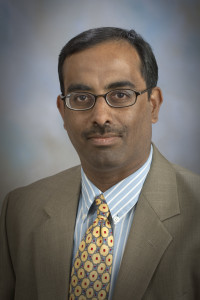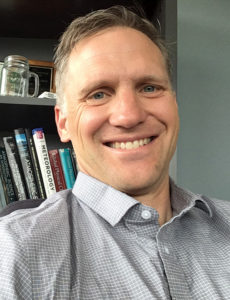The American Meteorological Society will recognize three Colorado State University researchers for their outstanding contributions to weather, water and climate science.
Electrical and Computer Engineering Professor V. Chandrasekar will receive the prestigious Verner E. Suomi Technology Medal. Eric Maloney, professor and department head of Atmospheric Science, and Mark DeMaria, senior research scientist at the Cooperative Institute for Research in the Atmosphere, will be named AMS Fellows.
The recipients will be honored at the 103rd American Meteorological Society Annual Meeting Jan. 8-12 in Denver.
Suomi Technology Medal

Chandrasekar is a University Distinguished Professor and leading expert in the field of radar and remote sensing. He was selected for the Suomi Technology Medal for leadership in developing techniques to observe precipitation processes using dual-polarization and spaceborne radar.
Chandrasekar’s decades-long research has enabled cutting-edge radar and satellite technologies for studying weather and climate from land, sea and space. He is widely recognized for his pioneering contributions to the development of dual-polarization – a signature radar technology for severe weather forecasting. Chandrasekar is a Fellow of the National Academy of Inventors, AMS, American Geophysical Union, Institute of Electrical and Electronics Engineers, International Union of Radio Science and CIRA. In 2016, he received the honor of being knighted by the government of Finland for his technical contributions. He also received the IEEE Distinguished Achievement Award.
AMS Fellows
Maloney and DeMaria, an Atmospheric Science alumnus, have been named Fellows. Fellows are elected based on their extensive record of contributions to atmospheric or related sciences. No more than two-tenths of one percent of all AMS members are considered for the honor any given year.

Maloney joined the CSU faculty in 2008 and became department head in July. His research addresses challenges in tropical meteorology, climate dynamics, subseasonal prediction and ocean-atmosphere interaction. He has received research funding from the National Science Foundation, NASA, NOAA and the Office of Naval Research. He also has chaired the World Meteorological Organization’s Madden-Julian Oscillation Task Force and several NOAA task forces.
“I used to get copies of the AMS Bulletin as a kid and was in awe of the researchers who were elected as Fellows,” Maloney said. “Being recognized by the field in this way seemed like it was in another universe then and also early in my career. I honestly owe most of this to all the outstanding collaborators including students, postdocs, research scientists and faculty who I’ve been lucky to work with over the years, especially my colleagues here at CSU.”

DeMaria grew up in south Florida, experiencing several hurricanes in the early 1960s, which spurred his interest in tropical meteorology and hurricane forecasting. He earned his M.S. (1979) and Ph.D. (1983) at CSU. He spent most of his career with NOAA, splitting time between the National Hurricane Center and National Environmental Satellite Data and Information Service. After retiring from federal service, he joined CIRA as a senior research scientist in 2021. “Working in multiple agencies, ranging from an operational forecast center to a university research environment with opportunities to interact with students and faculty, has greatly benefitted my career,” DeMaria said.
DeMaria is a four-time recipient of the Banner Miller Award from the AMS, and has several NOAA accolades, including the NOAA Distinguished Career Award. “Some of my best ideas have come from watching forecasters identify what limits their ability to make accurate forecasts, and then interacting with the academic community to come up with solutions,” DeMaria said. “I have attended every AMS hurricane conference since 1979, which has helped to keep me up to date on the latest research. That interaction, and the great honor of being selected as an AMS Fellow, will help me continue to work on new ways to improve hurricane forecasting and mentor students and early career scientists.”